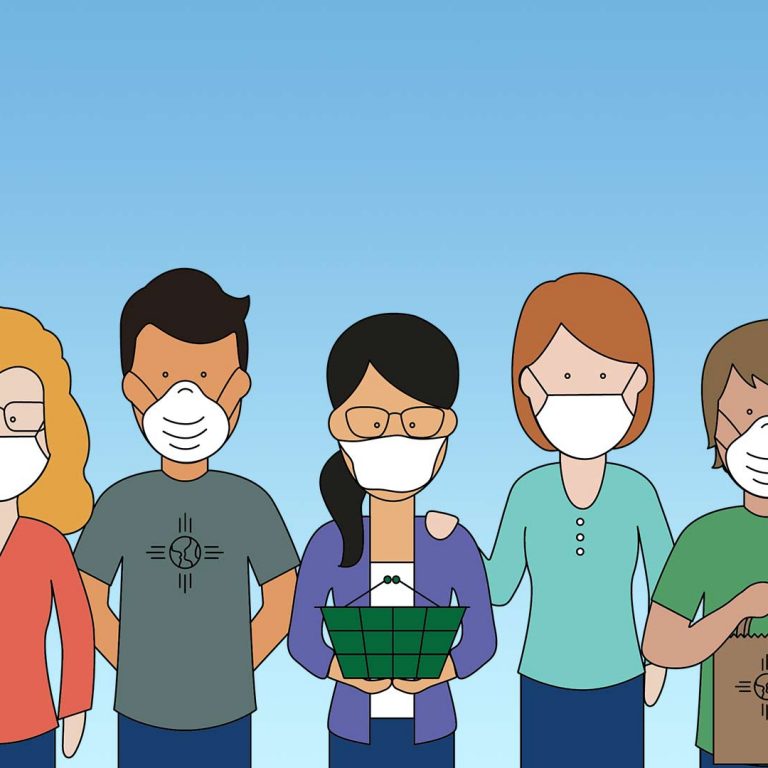
In the News
New Study Finds That Not All Milk is Created Equal
A recent study conducted by scientists at Emory University, in collaboration with The Organic Center, compared organic and conventional retail milk samples, and the results further highlight the importance of choosing organic dairy.
After testing milk samples from store shelves across the country, researchers found that a majority of the conventional milk samples tested positive for residues of antibiotics and controversial pesticides, while organic milk showed no such contaminants.
Key findings include:
• Antibiotic residues were detected in 60% of conventional milk samples and none of the organic samples.
• Significantly, 37% of the conventional samples tested positive for sulfamethazine, and 26% for sulfathiazole, both of which have long been outlawed in lactating dairy cows.
• One of the conventional samples contained residue levels of amoxicillin that exceeded the federally-allowed limit.
• Bovine growth hormone (bGH) residue levels were found to be 20 times higher in conventional milk than organic.
• Pesticide residues of chlorpyrifos, atrazine, permethrin and more were found in 26-60% of conventional samples, and none of the organic samples.
• Residues of the controversial and restricted-use pesticide chlorpyrifos showed up in 59% of the conventional samples.
The study was published in the peer-reviewed public health journal, Public Health Nutrition. To read more about the findings, visit The Organic Center website.
Study Reveals Explosion of Toxicity in U.S. Agriculture
A new peer-reviewed study, published in PLOS ONE and co-authored by Friends of the Earth Senior Staff Scientist, Kendra Klein, found that U.S. Agriculture is now 48 times more toxic to insect life than it was 25 years ago.
The study notes that neonic pesticides account for 92% of this increase because they are considerably more toxic to insects and far more persistent in the environment than other commonly used insecticides. The study also revealed that the three neonicotinoids that contributed most to the toxicity load are imidacloprid and clothianidin, both manufactured by Bayer-Monsanto, and thiamethoxam, a product of Syngenta-ChemChina.
While previous research has revealed how toxic neonicotinoids are for bees and other insects, how many pounds are used each year, and how long these chemicals persist in the environment, this study is unique in that it designed a way to combine all of this information to create a “time-lapse” of impact.
For the first time, it allows us to quantify how hazardous our agricultural lands have become for insect life, by providing a way to compare changes in the toxicity of U.S. agriculture year-to-year.
It reveals that the toxicity load has surged dramatically since neonicotinoids were introduced in the 1990s. It also shows an increase in the toxicity load beginning in the mid-2000s, which is when the practice of using neonicotinoids to coat the seeds of commodity crops like corn and soy began.
The increase in toxicity measured by the study is consistent with the reduction in beneficial insect life observed in recent years. It’s important to note that organic farms, which prohibit the use of neonicotinoids, have been shown to support up to 50% more pollinating species than conventional farming.
More information about the study is available on the Friends of the Earth website.
Monsanto’s Campaign to Discredit Critics
Newly released internal documents from agrochemical company, Monsanto, reveal a sophisticated, years-long campaign to discredit journalists and activists. The documents, which surfaced as part of ongoing litigation concerning the health hazards of the company’s Roundup weedkiller, show that Monsanto was particularly worried about U.S. Right to Know Research Director, Carey Gillam and her book, Whitewash: The Story of a Weed Killer, Cancer, and the Corruption of Science. Monsanto developed a number of talking points for third parties to use in criticizing the book, and worked with Search Engine Optimization (SEO) experts to promote search results that were critical of Gillam’s work. The documents also reveal that Monsanto carefully monitored Neil Young’s Twitter activity after he released an album titled, The Monsanto Years. To review the documents and learn more, visit the U.S. Right to Know website.
Further Reading

Sumbody: Handmade Skincare from Sebastopol
Read More trending_flat
Guide to Winter Squash
Read More trending_flat